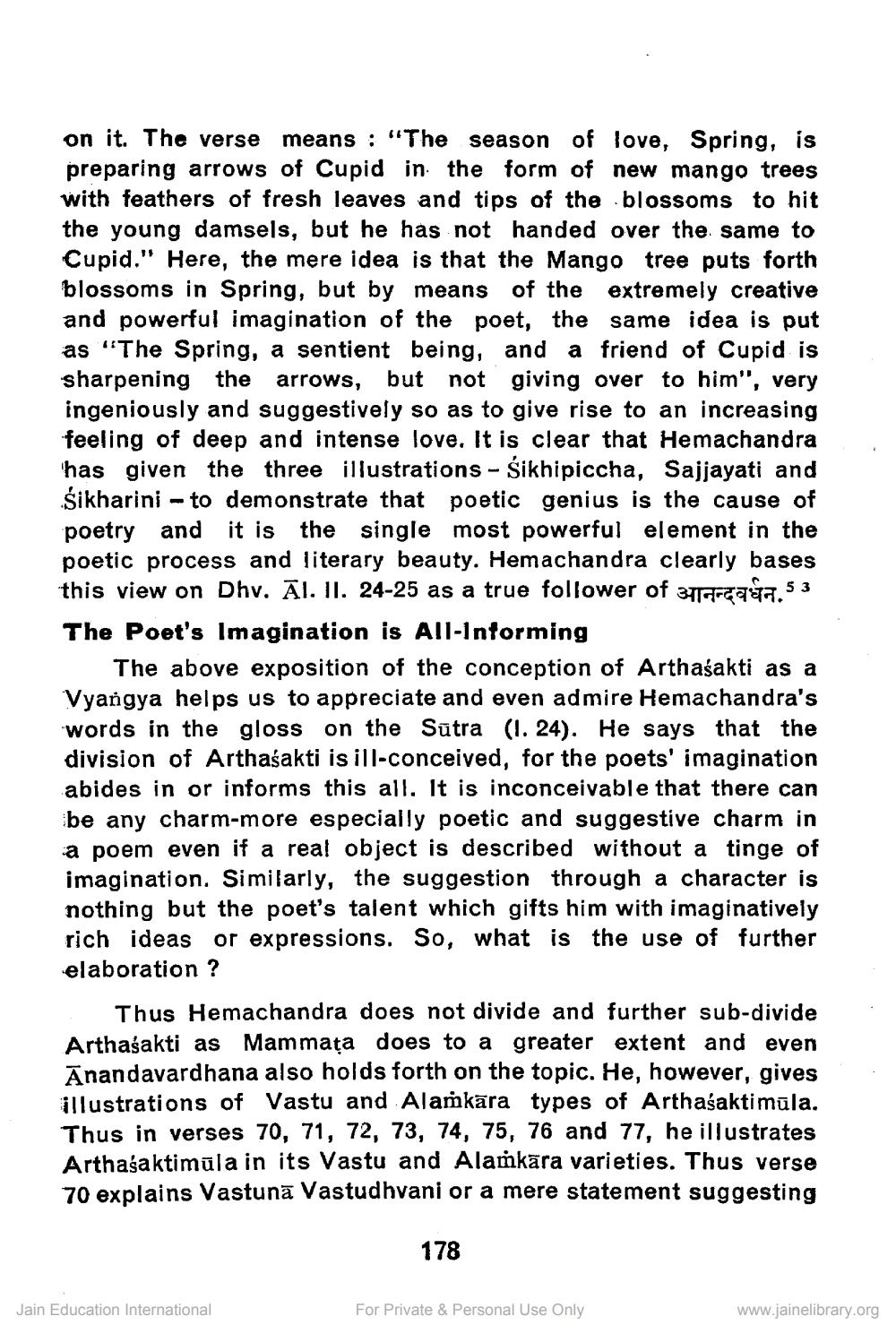________________
on it. The verse means : "The season of love, Spring, is preparing arrows of Cupid in the form of new mango trees with feathers of fresh leaves and tips of the blossoms to hit the young damsels, but he has not handed over the same to Cupid." Here, the mere idea is that the Mango tree puts forth blossoms in Spring, but by means of the extremely creative and powerful imagination of the poet, the same idea is put as "The Spring, a sentient being, and a friend of Cupid is sharpening the arrows, but not giving over to him", very ingeniously and suggestively so as to give rise to an increasing feeling of deep and intense love. It is clear that Hemachandra has given the three illustrations - Sikhipiccha, Sajjayati and śikharini - to demonstrate that poetic genius is the cause of poetry and it is the single most powerful element in the poetic process and literary beauty. Hemachandra clearly bases this view on Dhv. Al. II. 24-25 as a true follower of Blaga87.5 3 The Poet's Imagination is All-Informing
The above exposition of the conception of Arthasakti as a Vyangya helps us to appreciate and even admire Hemachandra's words in the gloss on the Sūtra (1. 24). He says that the division of Arthasakti is ill-conceived, for the poets' imagination abides in or informs this all. It is inconceivable that there can be any charm-more especially poetic and suggestive charm in a poem even if a real object is described without a tinge of imagination. Similarly, the suggestion through a character is nothing but the poet's talent which gifts him with imaginatively rich ideas or expressions. So, what is the use of further elaboration ?
Thus Hemachandra does not divide and further sub-divide Arthasakti as Mammața does to a greater extent and even Anandavardhana also holds forth on the topic. He, however, gives illustrations of Vastu and Alaskāra types of Arthasakti mūla. Thus in verses 70, 71, 72, 73, 74, 75, 76 and 77, he illustrates Arthasaktimüla in its Vastu and Alamkāra varieties. Thus verse 70 explains Vastunā Vastudhvani or a mere statement suggesting
178
Jain Education International
For Private & Personal Use Only
www.jainelibrary.org




